Tech
The Invisible ROI: Measuring Long-Tail Value From Technical Web Improvements

Introduction
SEO wins aren’t always loud or obvious. Some of the most impactful changes happen behind the scenes. Understanding these technical gains is essential for teams offering SEO management services to show long-term value.
Table of Contents
The Quiet Power Of Technical SEO
Most people focus on keywords, content, and backlinks. But technical SEO forms the foundation for everything else. When the backend runs smoothly, everything on the front end performs better.
Crawlability, page speed, and structure impact how search engines index and rank your site. Even minor technical tweaks can lead to significant visibility improvements. The challenge is that these gains unfold slowly and are easy to overlook.
That’s why tracking the long-tail impact of technical work is key to proving ROI.
Crawl Budget Optimization
Search engines allocate a limited crawl budget for each site. If your pages aren’t organized or your server is slow, bots may skip valuable content. Optimizing crawl budget ensures the right pages get discovered and indexed efficiently.
This involves reducing redirects, fixing broken links, and prioritizing high-value URLs. It also includes eliminating thin or duplicate content that wastes crawl resources. These changes help Google focus on the most important pages.
Over time, improved crawling can boost rankings across your entire site, especially for deep or niche pages that used to be ignored.
Structured Data For Rich Results
Structured data, also known as schema markup, helps search engines understand your content better. It doesn’t directly affect rankings but enhances how your pages appear in search results.
Adding schema can trigger rich snippets like star ratings, FAQs, or product details. These extra elements increase click-through rates, which indirectly boost SEO. They also improve user trust and engagement.
For e-commerce or local businesses, structured data can quietly lift performance without changing a single word of visible content.
Site Speed And Core Web Vitals
Google uses site speed and Core Web Vitals as ranking factors. A faster site doesn’t just keep users happy—it also improves indexation and mobile usability. This is especially important for sites with extensive catalogs or international audiences.
Technical fixes like image compression, lazy loading, and script deferral can significantly reduce load times. These changes often go unnoticed by users, but search engines reward them.
Over time, better performance leads to lower bounce rates, higher engagement, and more organic visibility.
Internal Linking Architecture
A clean internal linking structure helps search engines crawl and understand your site’s hierarchy. It also distributes link equity more effectively across your pages. Many older sites suffer from poor internal linking, which holds back growth.
Updating navigation, adding contextual links, and ensuring orphan pages are discoverable can drive long-tail traffic. With the proper internal support, even buried blog posts can become traffic drivers.
This kind of optimization is subtle but powerful. It doesn’t create new content; it helps existing content perform better.
Canonicals, Redirects, And Indexing Control
Many technical issues stem from confusion about which version of a page to show. Canonical tags, redirect rules, and robots.txt settings help search engines focus on the right content.
If not configured correctly, duplicate pages may compete with each other in search results. Redirect chains can also slow down crawling and dilute SEO value. Technical SEO helps untangle these problems at scale.
Fixing them leads to cleaner indexation, stronger signals, and more focused ranking potential across all your URLs.
Measuring Long-Tail Impact
Technical changes don’t always result in instant ranking jumps. Instead, they open the door for gradual, compounding growth, especially on long-tail queries. These improvements might show up in performance dashboards over months, not weeks.
Use tools like Google Search Console and log file analysis to spot the differences. Track index coverage, crawl stats, and impressions for older pages.
You’ll often find that technical fixes spark a slow rise in visibility across hundreds of previously underperforming pages.
Communicating Invisible ROI To Stakeholders
Clients and stakeholders may overlook technical work because the results aren’t flashy. It’s your job to show them the data behind the progress. Build reports that connect backend fixes to organic performance over time.
Highlight metrics like crawl rate improvements, structured data impressions, or faster load times. Translate these into business outcomes like increased visibility, higher conversions, or reduced bounce rates.
When stakeholders see the connection, they start valuing technical SEO as more than just upkeep—it becomes a growth engine.
Conclusion
Technical SEO improvements may be invisible initially, but their impact compounds over time. The long-tail results are meaningful and measurable, from better crawling to faster performance. This is where SEO management services prove their real strategic value.
-

 GENERAL6 months ago
GENERAL6 months agoChristofle – For Those Who Dream of Family Heirloom Silver
-

 SPORTS8 months ago
SPORTS8 months agoDiscover the World of Football with Streameast: Watch Your Favorite Leagues and Tournaments
-

 GENERAL4 months ago
GENERAL4 months agoUncovering the World of кинокрадко: The Dark Side of Film Piracy
-

 GENERAL2 months ago
GENERAL2 months agoATFBooru: Anime, Gaming, and Subculture Imageboard



























